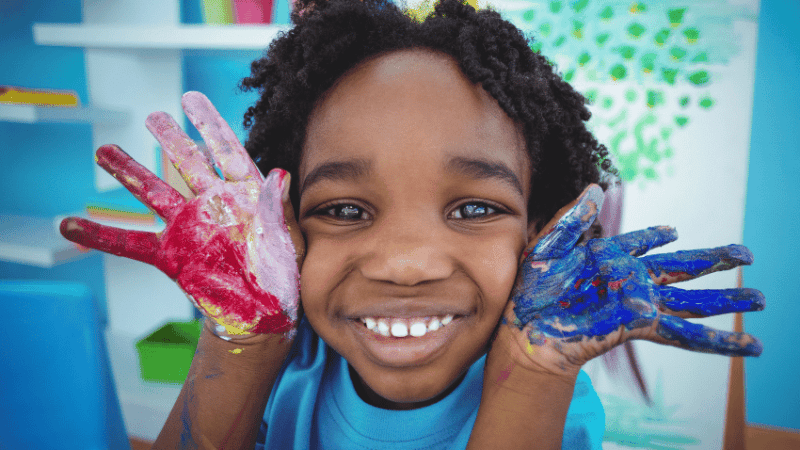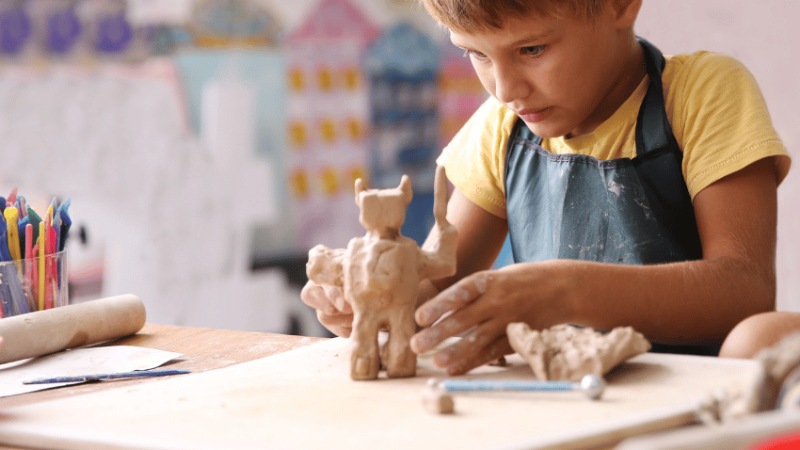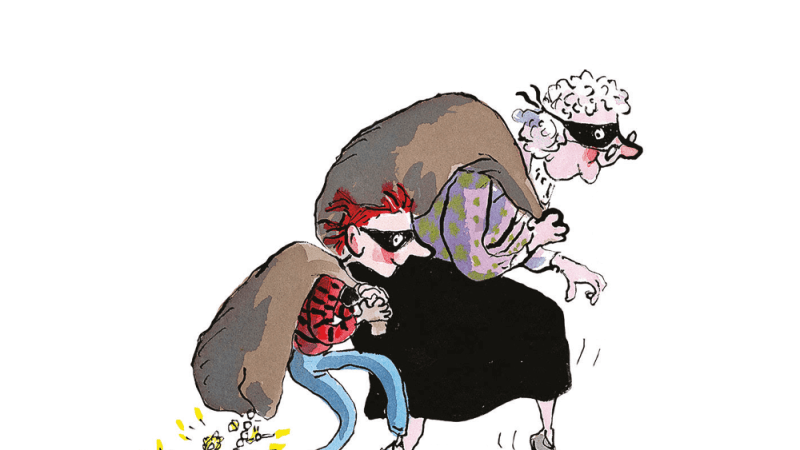12 Early Years Activities for Rainy Spring Days
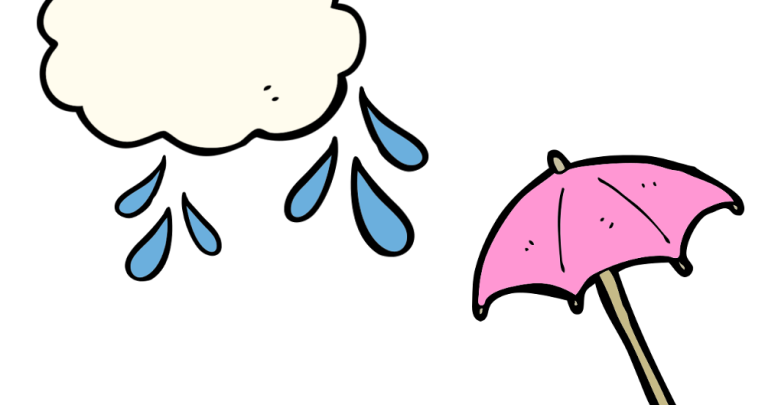
Don’t let the showers keep you penned up indoors – grab a coat and boots, and get your children learning (and splashing) in the wet, with these ideas from Judith Harries…

- by Judith Harries
- Music, art and drama specialist with 25 years of teaching experience
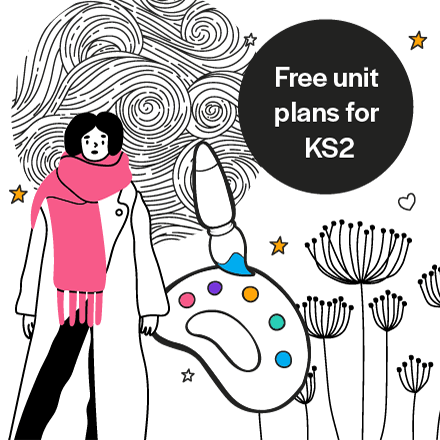
RAINY DAY ART
1 | Under my umbrella
Make a small umbrella template for the children to draw round onto a piece of white paper. Invite them to colour it in using wax crayons. Can they draw a self-portrait under the umbrella holding it tight? Cover the umbrella and portrait with plastic to protect it from the rain!
Now add some rain: splatter-paint by flicking thin blue paint off a toothbrush, or place the picture on an easel, suck up multicoloured paints in pipettes, and let it drip down the paper.
Search ‘Marc Allante’s Umbrella Couple’ online for inspiration.
2 | Painting in the rain
Head outside on a wet day with a small group of children. Sprinkle coloured powder paints onto the playground floor, and let children spread them around with brooms and brushes. Sweep the colours together to mix new ones. Add soap bubbles at the end to clean up!
Alternatively, indoors, break old watercolour paint blocks and sprinkle onto paper. Take outside in a tray and leave in the rain. If they don’t run enough, try spreading cling film over the paper and let children squash the paint pieces and watch it spread.
3 | Water music
Make a rainstick using a long, sturdy cardboard tube from inside a roll of wrapping paper. Help children hammer nails or push paper fasteners into the sides at random intervals (this will slow down the contents and makes the sound last longer).
Wrap the tube in paper or aluminium foil. Use a circle of stiff paper to cover one end, and fill with dry rice. Decorate the outside, then securely cover the open end. Tip the stick to hear the sound of rain. Shake along to the children’s favourite rain rhymes.
RAINY DAY MATHS
4 | Patterns in the playground
When you know it’s going to rain overnight, place shape templates or pots out on the playground. When the rain stops, go outside with the children and move the containers to reveal dry shapes underneath. Can they identify them?
Ask the children to draw more shapes with chalk. Try repeated patterns of circles, squares and triangles. The wet floor should make the chalks more vibrant.
Try some ‘rainy rubbings’. Press small strips of aluminium foil onto bricks, manhole covers or wood, and let children rub them to make an impression of the patterns.
5 | Making mandalas
Look at some images of mandalas (Tibetan for ‘wheel’) and talk about the symmetry they display. Explain to children that they are going to create mandalas in the rain.
Make flat circles of clay on pieces of cardboard or in plastic trays, and take them outside. Can children use found objects to create a symmetrical display on the clay? Try leaves, stones, seeds, fruit, petals, bark, sticks and so on.
Photograph the finished mandalas, then remove the items and start again. This activity also works inside with paper circles and pens.
6 | Outdoor numbers
Draw a pathway around the playground using chalk. Subdivide it into boxes and write the numbers 1–12 in them. Take the children outside and let them walk along the path with a partner, reading the numbers as they go.
Now can they walk backwards and say the numbers in reverse? Can they walk on just the odd or even numbers? Invite children to roll some large foam dice to create an addition or subtraction number sentence. Who can find the box with the right answer first?
RAINY DAY EXERCISE
7 | Puddle jumping
Take the children outside in their wellies, and have fun jumping into real puddles. Can they jump or hop from one into another? Who can find the smallest, biggest or deepest puddle?
If the rain dries up, draw puddle shapes on the ground using playground chalks. Try some watery sound effects such as ‘splash’, ‘splosh’ and ‘squelch’. Play a game of ‘Musical puddles’. When the music stops, the children have to find their own puddle to jump in. Last one to do so is out!
8 | Moving water
Outside, ask children to stand around a large waterproof sheet or tarpaulin. Stretch the sheet out taut and let the children hold on to the edges like a parachute. Empty a bucket of water onto the tarpaulin and move the water around. Try to keep the water on the tarpaulin. If the water tips off, everybody will get very wet!
Watch the water change shape as the plastic sheet moves. This tends to be a very wet activity and it’s essential to finish by going back inside to share a hot drink and snack!
9 | Umbrella dancing
Watch the dance routine from Singing in the Rain on YouTube. https://www.youtube.com/embed/D1ZYhVpdXbQ?rel=0
Choose a song about the rain that the children like such as ‘Umbrella’ by Rihanna. Make up a simple dance routine. Try some of these ideas. Wear wellies and use folded umbrellas, stand children in a circle, stamp on the spot, step inside and back, twirl the umbrellas in front, and then behind.
Go outside and try some dancing moves in the rain. Open the umbrellas, and show children how to lift them up and down carefully. Try spinning, twirling, opening and closing. Don’t forget to film the dancing!
RAINY DAY WORLD
10 | Measuring water
Make a rain measure from a 2L bottle. Help the children cut off the top third of the bottle. Turn it upside down and fit it into the open end of the bottle. Cover the join with coloured tape. Place the bottle outside to catch the rain.
Make a ‘rainman’ measure from a wooden spoon with 1cm marks on the handle. Decorate the cup of the spoon with a face, googly eyes and hair. Insert it into the bottle each day to measure rainfall, and help children record it on a chart.
11 | What’s waterproof?
Ask children why they think it’s useful to have waterproof materials. Try this experiment to find out what’s best at keeping out the rain. Choose some test materials: cotton fabric, metal bowl, paper towel, piece of wood, cardboard, plastic toy, etc.
Ask the children to predict what will happen. Leave them out in the rain overnight. Do the materials look, feel or smell different when wet? Let the children touch and talk about what happens. Which material would make the best waterproof hat?
12 | Raining in a jar
Explain where rain comes from, and look for clouds in the sky. Point out different types. Clouds are made up of tiny droplets of water – when they get too heavy, they fall to the ground.
Invite children to work with a partner to make ‘rain in a jar’. Fill each jar with water up to 4cm from the top. Spray a loose layer of shaving foam on the top of the water to form a cloud. Squirt a few drops of food colouring onto the cloud, and watch it slowly drip through like rain.
All-weather education
Playing outside in all weathers is an important part of early years education. So long as the children, and staff, have warm, dry and appropriate clothing, nothing should stop you from exploring the opportunities the outdoors can provide.
All areas of the curriculum can be enjoyed. Things look, smell, feel and sound different in the wet.
The forest school movement believes in children’s “capacity to instigate, test and maintain curiosity in the world around them” and actively encourages practitioners to access the outdoors in all weathers and let children go beyond planned activities as they explore the natural world.
These activities could be seen as just jumping-off points for much more learning and fun in the rain.
Tip
In the film Cloudy With a Chance of Meatballs inventor Flint Lockwood makes a machine that converts water into food, which then falls from the sky like rain. Which food would the children like it to rain?
Judith Harries is an author and teacher of music and drama, with experience of working with children aged nine months to 11 years. Follow her on Twitter at @judeharries. Browse more Early Years activities.






